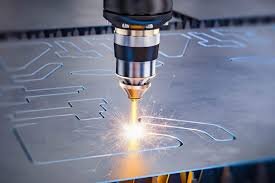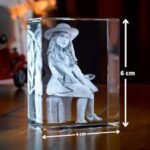
Laser Etching is a technology that uses a focused laser beam to create permanent marks on a variety of materials. It’s similar to laser engraving, but with a slightly different approach. Instead of removing material, laser etching often changes the color of the material or alters its surface properties.
| Feature | Laser Engraving | Laser Etching |
| Material Removal | Removes material | Changes color or surface properties |
| Typical Result | Creates a recessed mark | Creates a mark by altering the material’s surface |
| Examples | Creating text or logos on wood | Creating a matte finish on metal |
How Does it Work?
- The Laser: The machine uses a powerful laser, often a fiber or CO2 laser, which emits a concentrated beam of light.
- Focusing: The laser beam is focused onto a specific area of the material.
- Etching: When the focused laser beam hits the material, it interacts with the surface in one of two ways:
- Color Change: The laser can change the color of the material by altering its molecular structure.
- Surface Modification: The laser can create a textured or matte finish on the surface of the material.

What Can it Etch On?
Laser etching can mark on a wide range of materials, including:
- Metals: Stainless steel, aluminum, brass, etc.
- Plastics: ABS, PVC, polypropylene, etc.
- Glass:
- Ceramics:
Why is Laser Etching Popular?
- Permanent Marks: Laser marks are resistant to wear and tear, chemicals, and extreme temperatures.
- High Precision: The laser beam can create very fine and detailed marks.
- Versatility: Can etch on a wide range of materials.
- Speed: Laser etching is a fast process.
- No Consumables: Unlike traditional etching methods, laser etching doesn’t require ink or other consumables.
Common Uses:
- Industrial Marking: Marking product numbers, serial numbers, barcodes, and logos on manufactured goods.
- Medical Device Marking: Marking medical implants and instruments.
- Automotive Industry: Marking parts and components.
- Jewelry: Creating intricate designs and patterns on jewelry pieces.



